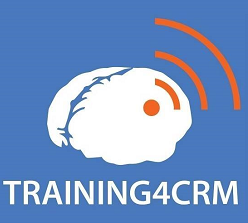Last month, family-owned industrial 3D printer manufacturer FELIXprinters officially launched its next generation Pro L and Pro XL 3D printers from its corporate headquarters and factory in the Netherlands – solidifying its place as a cost-effective and versatile supplier in the industrial additive manufacturing sector.
Both the Pro L and Pro XL 3D printers feature a flexible build plate for smooth, damage-free removal of prints, interchangeable print heads, and greatly increased build volumes. The Pro L offers a 300 x 400 x 400 mm build size and a 48 liter build volume, while the Pro XL has a 600 x 400 x 600 mm size and 144 liter volume. Both of these 3D printers come with highly engineered print chambers, which have enclosed cold and warm zones for, respectively, housing electronics and supporting consistent temperature control. Additionally, the Pro L and Pro XL have many intelligent features to speed things up, such as dual nozzles that can minimize print failure by automatically avoiding collisions.
 FELIXprinters also serves the industry in another way – customers can not only purchase its 3D printers off-the-shelf, but they can also request customized, tailor-made platforms for specific applications, like bioprinting. Rather than fixing up an off-the-shelf machine by adding accessories, FELIXprinters can build a specialized solution from scratch so it meets customers’ requirements.
FELIXprinters also serves the industry in another way – customers can not only purchase its 3D printers off-the-shelf, but they can also request customized, tailor-made platforms for specific applications, like bioprinting. Rather than fixing up an off-the-shelf machine by adding accessories, FELIXprinters can build a specialized solution from scratch so it meets customers’ requirements.
To make sure that it’s always at the forefront of 3D printing innovation, FELIXprinters works to build strategic partnerships with technology suppliers and customers, and its ability to create advanced, bespoke 3D printing solutions is due in large part to the company’s R&D team. While many of these customized solutions can’t be discussed publicly due to confidentiality, FELIXprinters was able to share a few recent examples of bespoke 3D printing platforms.
For example, the company is working in several R&D projects regarding food 3D printing, as the open design of its printers offers plenty of freedom in creating novel shapes for this application. FELIXprinters is also developing the capabilities to offer modular 3D printing stations, linked through Ethernet and controlled with a centralized control station. Each module will have its own HMI touch panel, and print beds will be automatically fed to the system; once a build is complete, the tray will be transferred to an automatic FIFO buffer. Multiple trays with customized print areas can be accommodated, as the modules will be connected with a transport conveyor to build an integrated 3D printer farm. Customized print heads can also be used for 3D printing with different materials, like pastes and plastics.
FELIXprinters is also participating in an EU-funded bioprinting project called training4crm that is initially working to cure Parkinson’s disease. The consortium of project partners – made up of seven universities and two additional commercial companies, including Biomodics – is working to create an array of stem cells that can be applied to any cell to cure or replace it; with Parkinson’s, the goal would be to replace the diseased brain cells.
 The task given to FELIXprinters for this bioprinting project is to supply a 3D printing platform that’s able to create the required cell arrays, as well as developing a hybrid printer that can print with two materials at the same time and an extruder that can print biofluids.
The task given to FELIXprinters for this bioprinting project is to supply a 3D printing platform that’s able to create the required cell arrays, as well as developing a hybrid printer that can print with two materials at the same time and an extruder that can print biofluids.
What do you think about these bespoke 3D printing applications offered by FELIXprinters? Discuss this story and other 3D printing topics at 3DPrintBoard.com or share your thoughts in the Facebook comments below.
[Images: FELIXprinters]Subscribe to Our Email Newsletter
Stay up-to-date on all the latest news from the 3D printing industry and receive information and offers from third party vendors.
You May Also Like
3D Printing Unpeeled: New Arkema Material for HP, Saddle and Macro MEMS
A new Arkema material for MJF is said to reduce costs per part by up to 25% and have an 85% reusability ratio. HP 3D HR PA 12 S has been...
3D Printing News Briefs, January 20, 2024: FDM, LPBF, Underwater 3D Printer, Racing, & More
We’re starting off with a process certification in today’s 3D Printing News Briefs, and then moving on to research about solute trapping, laser powder bed fusion, and then moving on...
3D Printing Webinar and Event Roundup: December 3, 2023
We’ve got plenty of events and webinars coming up for you this week! Quickparts is having a Manufacturing Roadshow, America Makes is holding a Member Town Hall, Stratafest makes two...
Formnext 2023 Day Three: Slam Dunk
I’m high—high on trade show. I’ve met numerous new faces and reconnected with old friends, creating an absolutely wonderful atmosphere. The excitement is palpable over several emerging developments. The high...


































